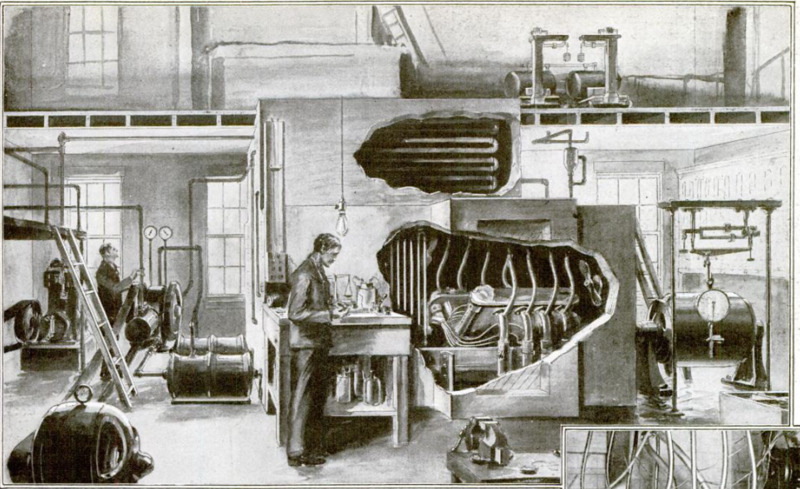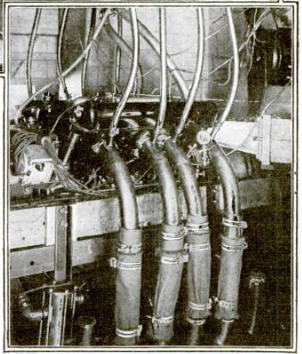How airplane engines are tested
Contenuto
-
Titolo
-
How airplane engines are tested
-
Article Title and/or Image Caption
-
Title: High Altitudes Brought to Sea-Level
-
Subtitle: How airplane engines are tested
-
extracted text
-
IF you wish to ascertain whether a
substance will melt at a tempera-
ture of 400° Fahrenheit, what do
you do? Simple enough: you make a
practical test by heating the substance
to a temperature of 400 degrees.
It is not always easy to make practi-
cal tests under the correct conditions.
Take engines, for instance. It is a
simple enough matter to try out a
stationary engine. Its environment
remains practically unchanged. There
may be some variations in tempera-
ture, air-pressure, humidity, and other
atmospheric conditions; but these
changes are, as a rule, neither abrupt
nor formidable enough to be of material
influence upon the efficiency of the
engine.
Tests for Airplane Engines Different
It is different, however, with the
engine of an airplane. Under ordinary
working conditions, the engine of an
airplane rising to high altitudes may
pass from one extreme of air-pressure
and temperature to the other in a few
minutes. If we wish to ascertain
what effect on the efficiency of the
engine such varying conditions may
have, we must try out the engine under
conditions closely resembling those
under which it would be expected to do
its work. It is obviously desirable to
make those practical tests before the
engine is permanently installed in an
airplane.
For the purpose of testing airplane
engines under conditions closely re-
sembling those of actual flight, the
Bureau of Standards at Washington
has established a testing plant com-
monly known as the “Altitude Lab-
oratory.”
In the Altitude Chamber
The testing chamber, in which the
engine is mounted in a manner re-
producing its mounting in an airplane,
is a room fifteen feet long, six feet wide,
and six and one half feet high, with
concrete walls a foot thick. These
walls are insulated on the inside with
cork.
The dynamometer for measuring the
power developed by the engine is out-
side of the chamber, and so are the
scales for weighing and continuously
registering the amount of fuel used, the
water-meter for the cooling water, the
gas-meter for the air intake, the gage
for showing the exact degree of air-
rarefication within the chamber, and
the dials of the electrical thermometers
registering the temperatures at differ-
ent points on the inside of the chamber.
The chamber is chilled by an ordi-
nary ammonia refrigerating plant,
and, to produce a wind effect, the icy
air inside is violently agitated by
electric fans. Two electric motors of
forty and fifty horsepower drive the
refrigerating and rarefying plants. To
assist in the maintenance of a low air-
pressure in the chamber, cold water is
injected into the exhaust.
The dynamometer, which measures
the power of the engine with wonderful
exactness, consists of a generator
driven by the crank-shaft of the
engine. The pull exerted by the
revolving armature of the generator
against its movable magnetic field is
transmitted by levers to a scale which
indicates the force of the pull in
pounds and fractions on a dial. The
current from the electric generator is
absorbed in resistances or fed to the
regular line wires from a switchboard,
and may be used to drive other
machinery.
-
Lingua
-
eng
-
Data di rilascio
-
1919-06
-
pagine
-
45
-
Diritti
-
Public domain (Google digitized)
-
Archived by
-
Davide Donà
-
Marco Bortolami (editor)



